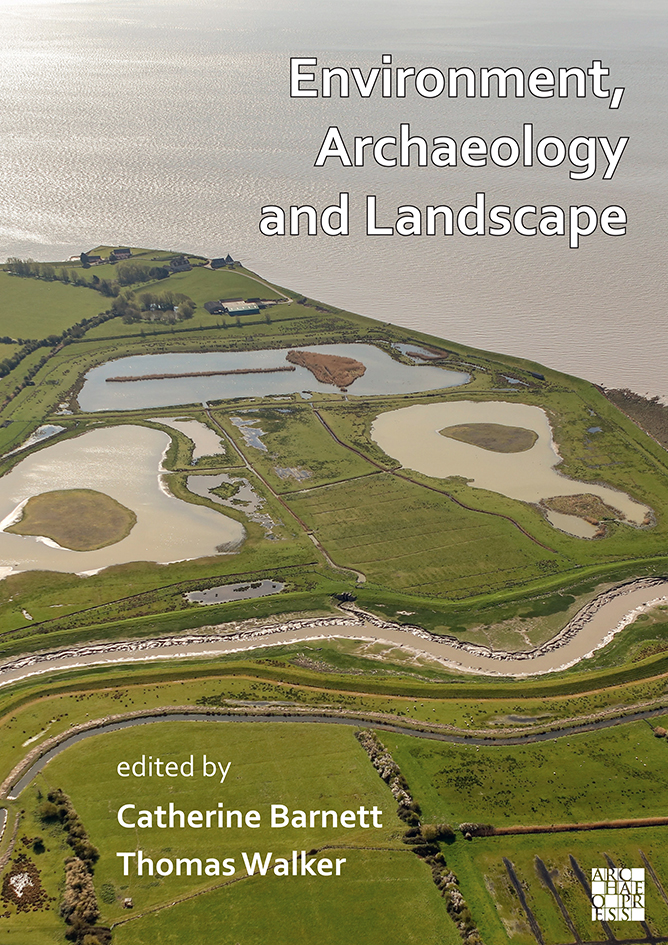Environment, Archaeology and Landscape: Papers in honour of Professor Martin Bell - 774 2021
- Anno: 2021
- Autore/i: Catherine Barnett and Thomas Walker
- Catalogo: Archaeopress
- Argomento: Archeologia
- ISBN: 9781803270845
- ISSN:
Environment, Archaeology and Landscape is a collection of papers dedicated to Martin Bell on his retirement as Professor of Archaeological Science at the University of Reading. Three themes outline how wetland and inland environments can be related and investigated using multi-method approaches. ‘People and the Sea: Coastal and Intertidal Archaeology’ explores the challenges faced by humans in these zones – particularly relevant to the current global sea level rise. ‘Patterns in the Landscape: Mobility and Human-environment Relationships’ includes some more inland examples and examines how past environments, both in Britain and Europe, can be investigated and brought to public attention. The papers in ‘Archaeology in our Changing World: Heritage Resource Management, Nature Conservation and Rewilding’ look at current challenges and debates in landscape management, experimental and community archaeology. A key theme is how archaeology can contribute time depth to an understanding of biodiversity and environmental sustainability. This volume will be of value to all those interested in environmental archaeology and its relevance to the modern world.
About the Editors
Catherine Barnett is a senior visiting research fellow, Department of Archaeology, University of Reading, investigating UK prehistoric landscapes; an IMAA workshop co-organiser and former codirector of the Silchester Environs project. She uses archaeological science techniques to examine human involvement in and responses to landscape-scale change. She is a technical director at Stantec, leading a multi-disciplinary team in pursuit of sustainable global design solutions.
Thomas Walker studied archaeology as a mature student at the University of Reading, gaining a BSc in 2010 and PhD in 2015. He is the author of The Gwithian Environment; molluscs and archaeology on Cornish sand dunes (Archaeopress, 2018). His current interests are in molluscs in archaeology. He regularly assists Martin Bell in his excavations and research, particularly at Goldcliff in the Gwent Levels.
Table of Contents (Provisional):
Editors’ foreword ;
Editors’ acknowledgements ;
Martin Bell: a personal appreciation – Mike Walker ;
Bishopstone, Sussex ;
PEOPLE AND THE SEA: COASTAL AND INTERTIDAL ARCHAEOLOGY ;
Mesolithic footprints – a protocol ;
Chapter 1: Battling the tides: the Severn Estuary wetlands during the prehistoric, Roman and medieval times – Stephen Rippon ;
Footprints at Goldcliff, Severn Estuary ;
Chapter 2: Walking beside our ancestors – Kirsten Barr ;
Chapter 3: Prehistoric activity on the Atlantic coastline: Westwood Ho! submerged forest – Michael J. Grant, Scott Timpany, Fraser Sturt and Alice de Vitry d’Avaucourt ;
Chapter 4: Humans and their environment during prehistory at Gwithian, Cornwall – Thomas Walker ;
Chapter 5: From coast to coast: recent palaeoecological investigations of submerged forests and intertidal peats at two coastal sites in the UK – Scott Timpany ;
Chapter 6: Neolithic and Bronze Age landing places in Britain, Ireland and Scandinavia – Richard Bradley ;
Chapter 7: The Sørenga D1A borehole site, Oslo Harbour, Norway: a multi-analytical geoarchaeological and palaeoenvironmental approach – Johan Linderholm, Richard Macphail, Jan Bill, Grethe Bukkemoen, Samuel Ericson, Sofi Östman and Roger Englemark ;
PATTERNS IN THE LANDSCAPE: MOBILITY AND HUMAN-ENVIRONMENT RELATIONSHSIPS ;
Martin in the field ;
Chapter 8: Hidden landscapes and lost islands – researching Somerset’s coastal wetlands – Richard Brunning ;
Brean Down, Somerset ;
Chapter 9: The Early-Middle Holocene of the River Parrett, Somerset: geoarchaeological investigations 2006-2011 – Keith Wilkinson, John Athersuch, Rob Batchelor and Nigel Cameron ;
Chapter 10: Drylands and wetlands; soils, sediments and snails – Michael J. Allen ;
Fieldwork in the Kennet Valley ;
Chapter 11: The Kennet Valley Predictive Mapping Project: contributions to development control, heritage management and nature conservation – Catherine Barnett, Michael J. Grant, Jonathan Last and Sarah Orr ;
Chapter 12: The lumpy outdoors: moving through landscapes and weather-worlds – Jim Leary ;
Excavations at marden, Wiltshire ;
ARCHAEOLOGY IN OUR CHANGING WORLD: HERITAGE RESOURCE MANAGEMENT, NATURE CONSERVATION AND REWILDING ;
Martin’s dress ;
Chapter 13: Translating geoarchaeology into geo-itineraries – Rowena Banerjea ;
Chapter 14: 30 years of discovery, conservation and management of cultural heritage of England’s wetlands – Jen Heathcote ;
Chapter 15: Wildwood, wood-pasture and rewilded woods: palaeoecological perspectives from ancient woodland – Petra Dark ;
Experimental earthworks and buildings ;
Chapter 16: Environmental archaeology and the wilding conundrum – Terry O’Connor ;
Chapter 17: Using experimental archaeology at Butser Ancient Farm to interpret the cultural formation processes of ancient metalworking – Chris Speed ;
Butser ancient farm, Hampshire – Fergus Milton ;
Chapter 18: Footprints in the mind: a legacy of public engagement through 181 the Living Levels Project – Alison Offord ;
Personal reflections ;
Bibliography of Martin Bell ;
Television programmes ;
Index
F.to 205x290mm; 220 pages; 72 figures, 18 tables (colour throughout).



